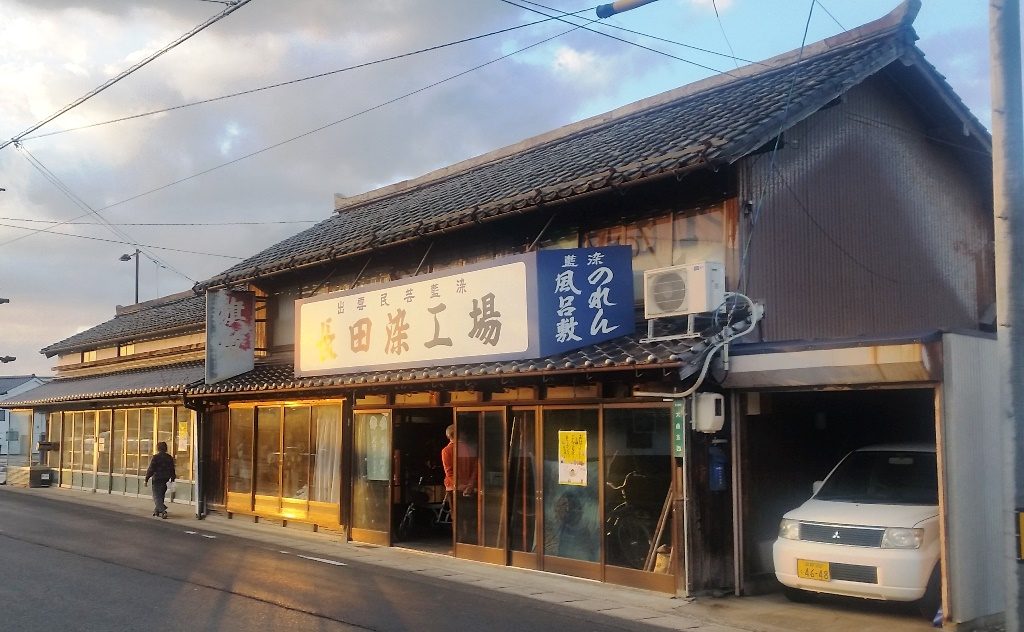Text and Photos by Alice Gordenker
Masao Nagata of Nagata Indigo Dyeing Works (長田染工場) in Izumo, Shimane demonstrates their hands-on dyeing process done just as in the olden days before mechanization.
First, he moistens the cloth before lowering it into a high-alkaline dye bath of fermented indigo and lye. Indigo appears green when lifted from the bath, but as it is rinsed in clear water and oxidation proceeds, it begins to turn its characteristic shade of blue, which will deepen with subsequent dips in the bath.
The studio where Masao and his father produce custom-order noren curtains, furoshiki wrapping cloths and more is one of just two left in Japan that specialize in tsutsugaki-zome dyeing, where patterns are drawn freehand using a rice-paste resist. Here Nagata-san Sr. holds an example. In addition to the rich indigo blue background, other colors are hand dyed with small brushes using Japanese pigment dyes.
You, too, can get a glimpse at everything that goes into this, in this excellent one-minute video



Comments
In 1989 my uncle Hiromichi Mihara brought my son and me to your workshop to see the tsutsugaki technique done by expert artisans. I have many fond memories of that day, your generosity, your marvelous skill and artistry. I was the head of the Fibers Area in the Department of Art at the University of Oregon in Eugene, Oregon, USA for 33 years. Now I am retired and a professor emeritus. I still treasure the small cloths I purchased from you and wanted you to know that my students benefited from seeing and handling them and learning about your craft. Now I have a small business with my son called Mihara Shibori Studio. We make highly textured silk scarves and teach classes in shibori, aizome and natural dyeing. So thank you for carrying on and building the tradition.
I am genuinely thankful to the owner of this website for sharing his brilliant ideas. I can see how much you’ve helped everybody who comes across your page. By the way, here is my webpage FQ6 about Thai-Massage.